Grayson Perry’s The Vanity Of Small Differences – Salisbury Cathedral
A review of Grayson Perry’s tapestry series The Vanity of Small Differences, on display at Salisbury Cathedral. What does the ecclesiastical setting add to the works? Let’s find out!

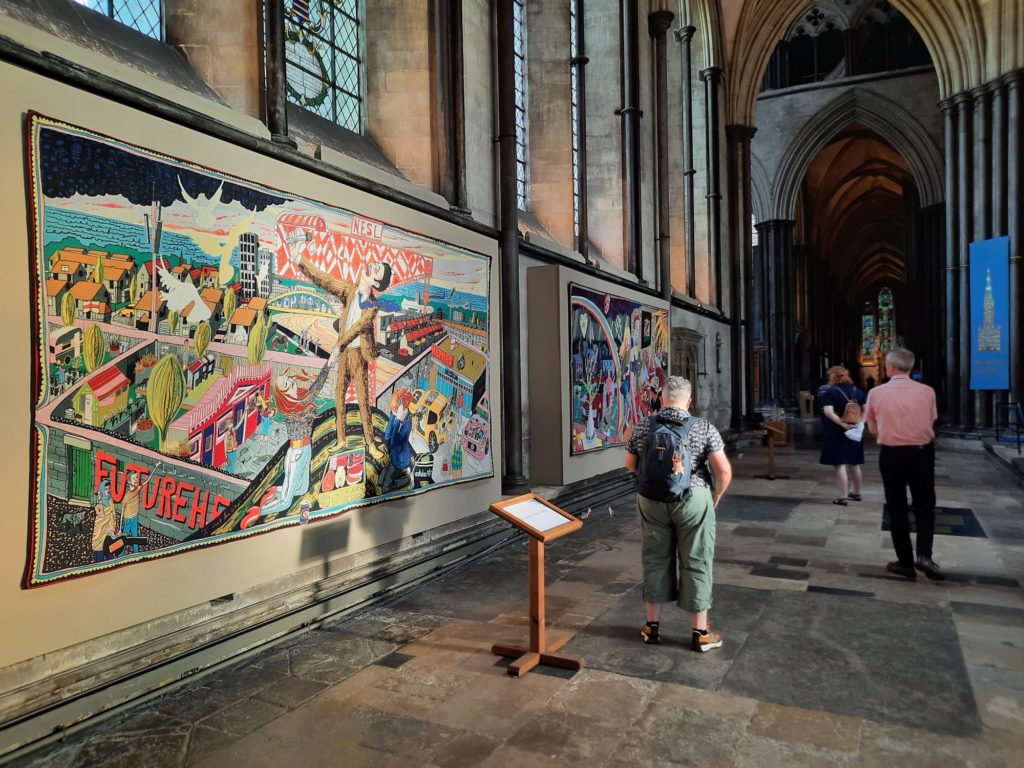


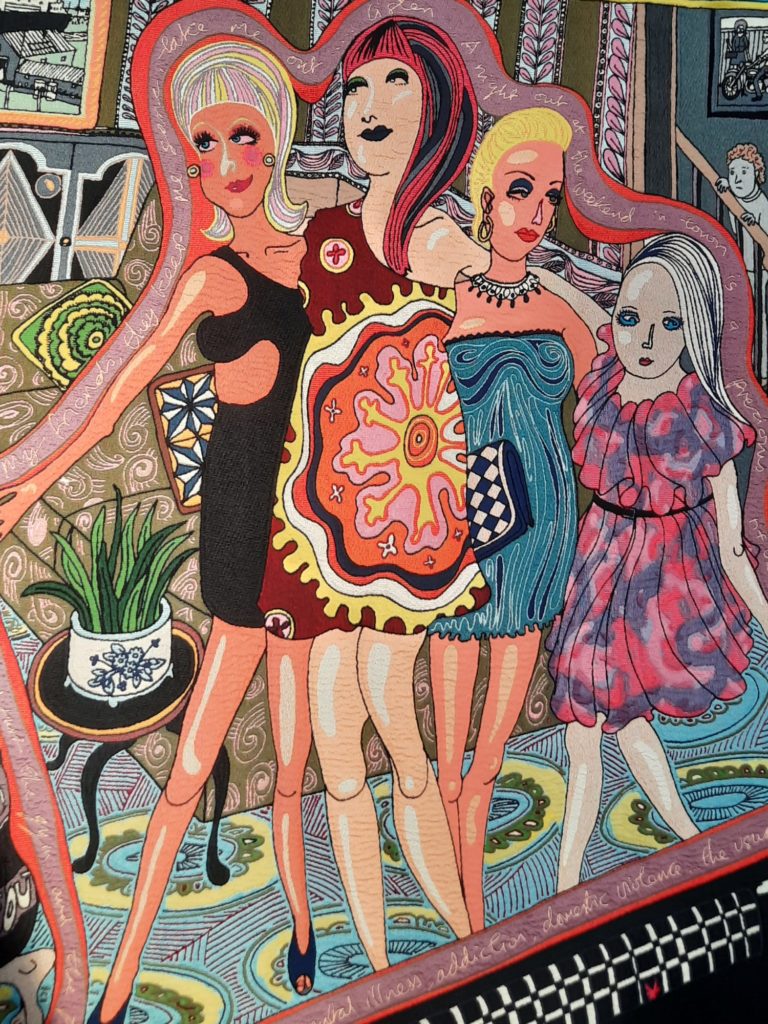

Grayson Perry At Salisbury Cathedral
The Salterton Arts Review is back in Salisbury. Last year we spent a weekend here exploring various sights including Salisbury Cathedral, Arundells and Wilton House. This time it was a lovely sunny weekend of punting, barbeques, and a return trip to the cathedral for a special exhibition. You can read more about the cathedral in my previous post. But essentially it is a treasure trove, with a copy of the Magna Carta as well as a lot of art and historic objects. And also a dipstick, to demonstrate the shallow foundations over gravel beds!
But enough about topics we’ve already covered. This time I was at Salisbury Cathedral specifically to see Grayson Perry’s The Vanity of Small Differences. This is an exhibition of six tapestries. Perry produced them about a decade ago, while also filming a documentary, All In The Best Possible Taste. The tapesty series, like the documentary, is all about class in Britain. Taking Hogarth’s A Rake’s Progress as his model, Perry charts the rise and fall of Tim Rakewell, from working class origins to middle class and elite, until he meets his unfortunate end (as protagonists in moral tales are wont to do).
The tapestries were produced in an edition, so multiple copies exist and have been displayed over the past few years. This is, however, the first ecclesiastical setting for the series. I was interested in how the setting would impact my impression of it. Would it lend a greater moral undertone? Would it draw out art historical layers? Maybe, and yes, in my opinion!

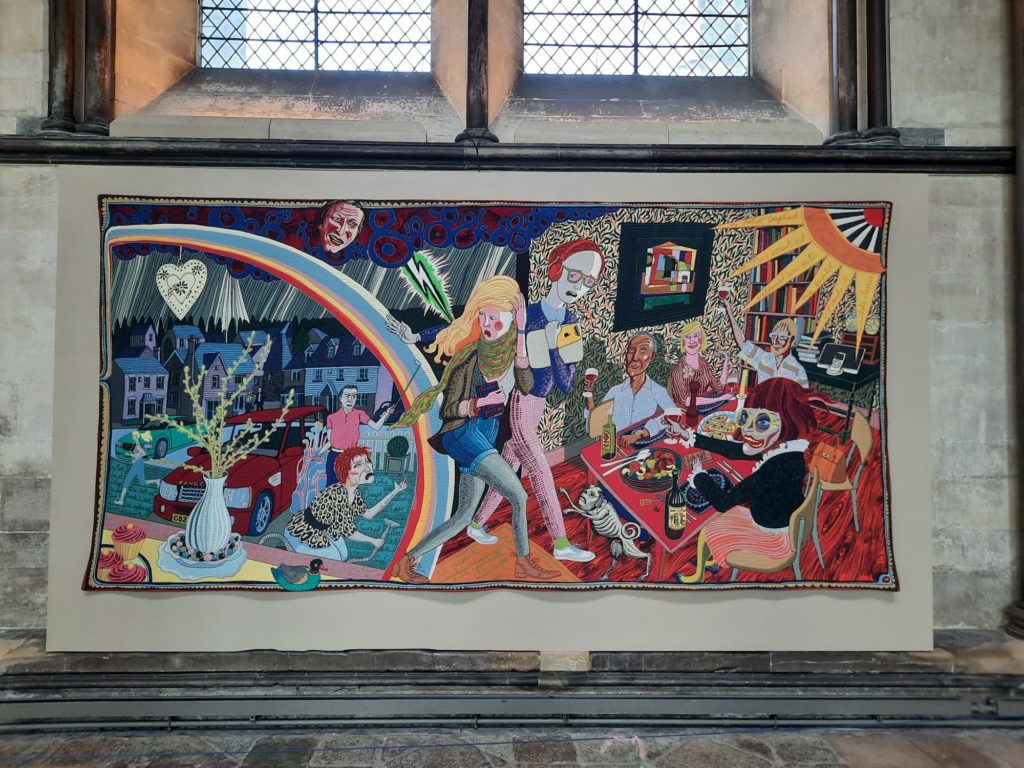
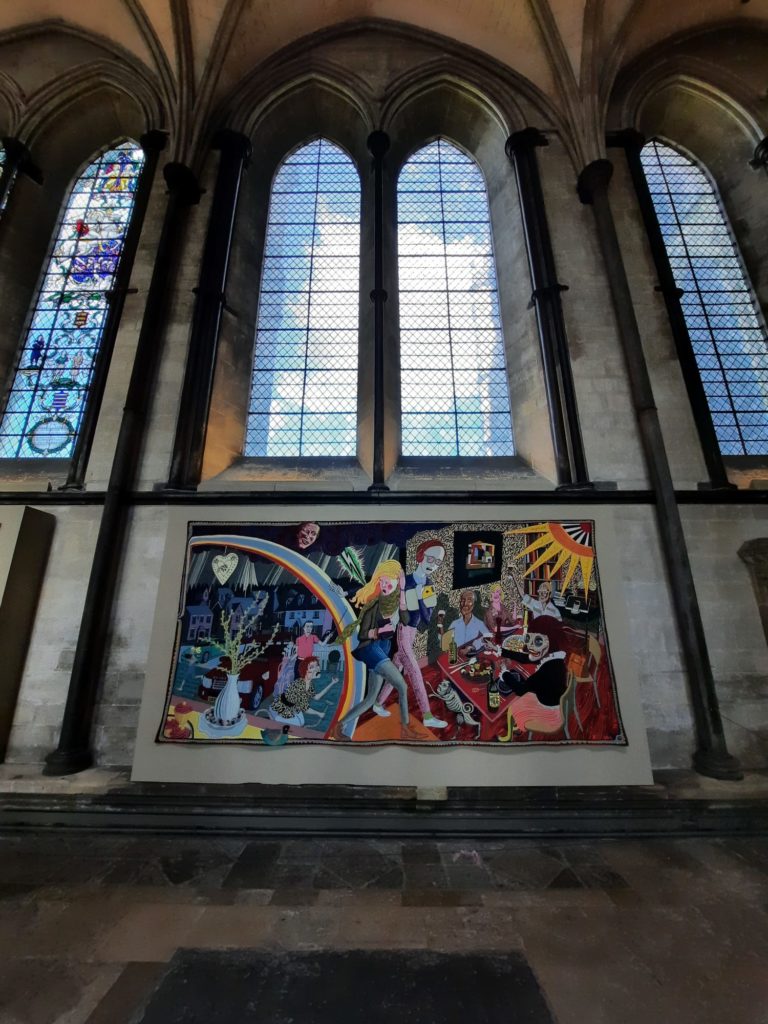



Grayson Perry’s The Vanity Of Small Differences
In the original Rake’s Progress, Tom Rakewell comes into some money, makes poor decisions, and dies in Bedlam. Perry’s version follows a similar arc of rise and fall, but packs in a lot more than the Hogarth references. The six tapestries tell the story of Tim Rakewell, born into a working class Sunderland family (The Adoration of the Cage Fighters, The Agony in the Car Park), who rises first into the middle classes through education and a fortunate match (Expulsion From Number 8 Eden Close), is wildly successful in business (The Annunciation of the Virgin Deal, The Upper Class at Bay), before crashing his luxury car and dying in the street, his new young wife looking on (#Lamentation).
As some of you will be able to tell from the titles of the works, there are an awful lot of Western/Christian art historical references packed in there. This takes the form of titles, compositions, and the form of particular figures. The tapestries reference Grünewald, Mantegna, Campin, Masaccio, and more. Most even have a little pug dog, just like Hogarth liked to include in his works. There’s a convex mirror like in Van Eyck’s The Arnolfini Marriage. And even what look like some Grayson Perry ceramics.
This is an incredibly rich lens through which to consider class in contemporary Britain. For those are the ‘small differences’ to which the title refers. The markers we use to signify our own class position, and identify that of others. The secret thoughts we don’t express are inscribed in the fabric of the tapestry, while Jamie Oliver, god of social mobility (no, literally) looks on. “This”, as the Dean of Salisbury Cathedral writes in the exhibition booklet, “is worthy of exploration in a Cathedral context.”

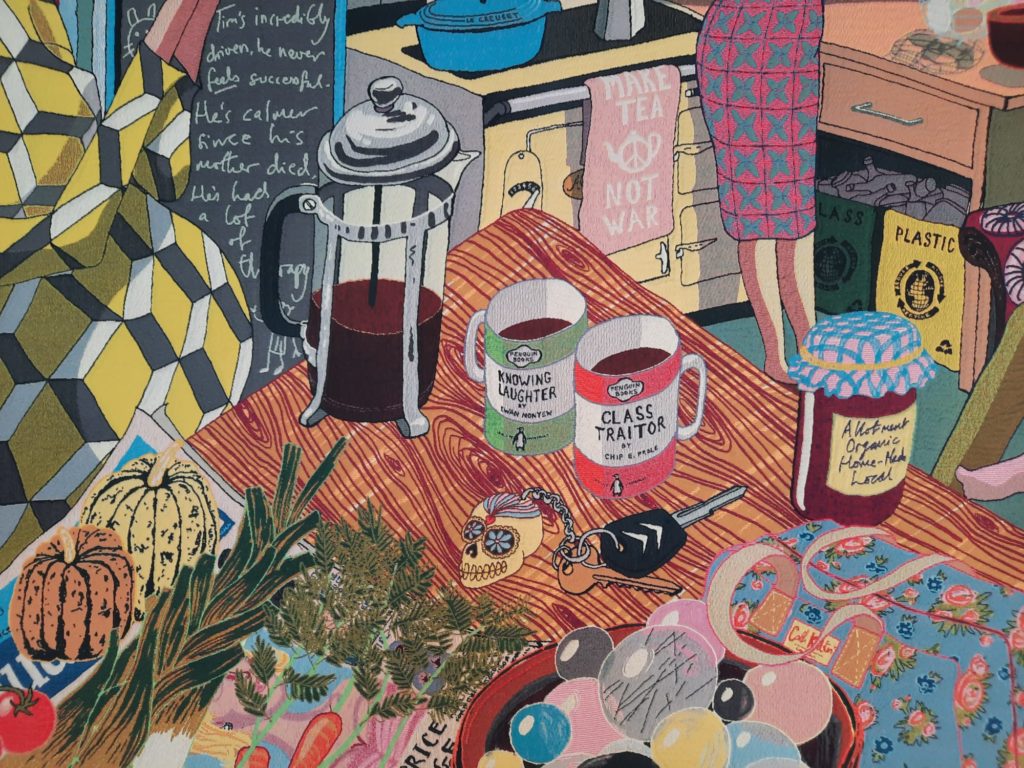
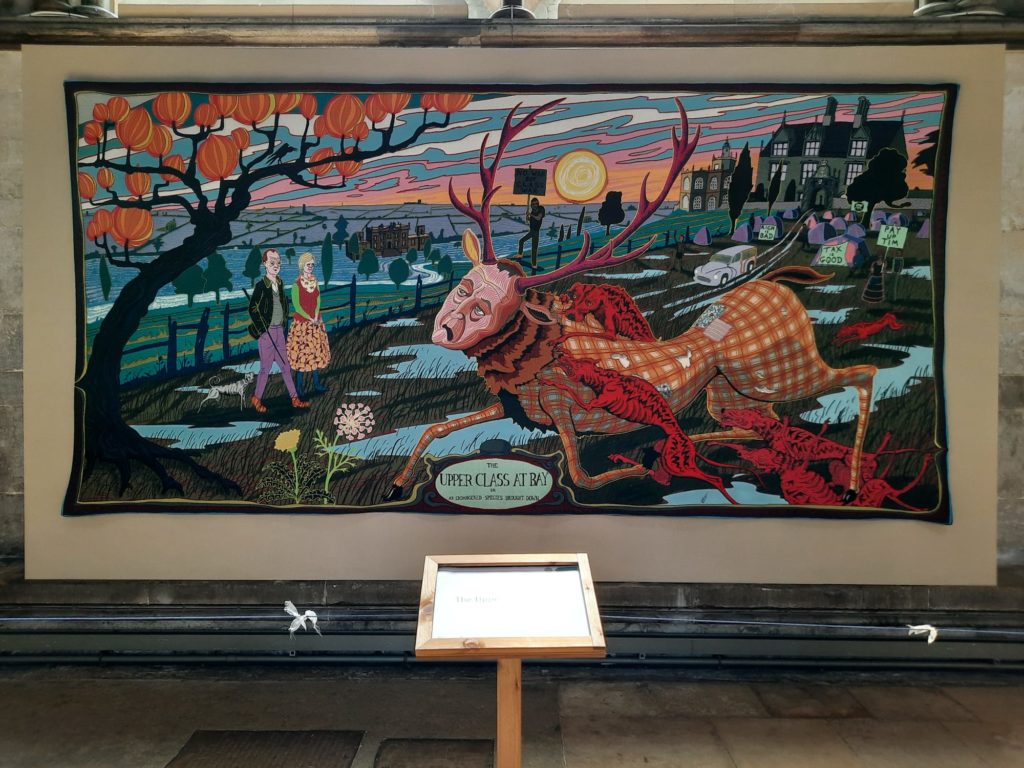

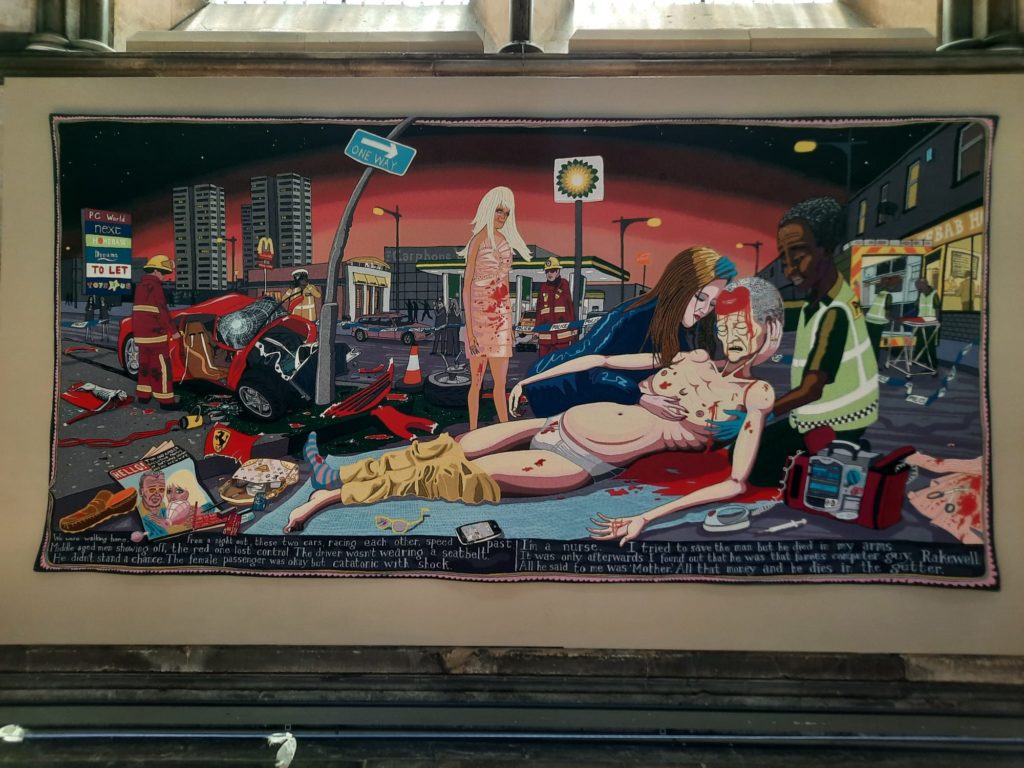

Contemplating A Modern Parable In A Cathedral
So what does the setting add to the work, above and beyond what it would be in a gallery? It does, I think, encourage the visitor to really consider the themes. How do we view ourselves and others? Do we create differences between ourselves and our fellow man where we should be finding similarities? What really drives our class identities and prejudices?
And although Salisbury Cathedral doesn’t actually have a lot of religious art of the type Grayson Perry references, the ecclesiastical setting is very evocative. It brings to mind all those centuries of art history, which is after all a sort of shared language and shorthand. Or does that depend on your social background?
If you’re in Salisbury, this is definitely worth a look. The tapestries hold their own in the vast cathedral setting, and it’s a nice peaceful space in which to take your time and take it all in properly. Local residents can even enter for free on production of their driver’s license! And out of town visitors should make sure to take their time and explore everything this historic space has to offer.
Salterton Arts Review’s rating: 4/5
Grayson Perry’s The Vanity of Small Differences on until 25 September 2022
Trending
If you see this after your page is loaded completely, leafletJS files are missing.

